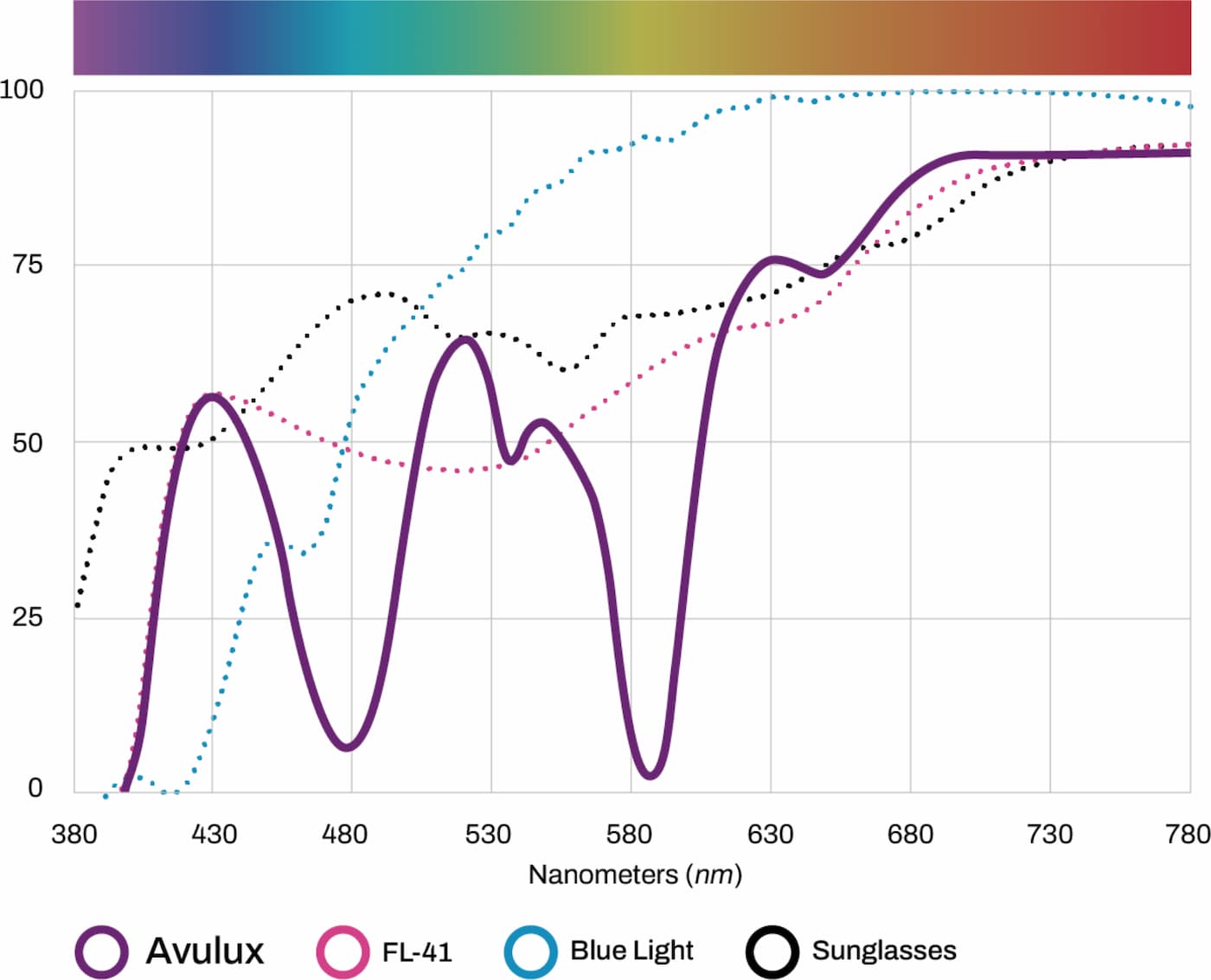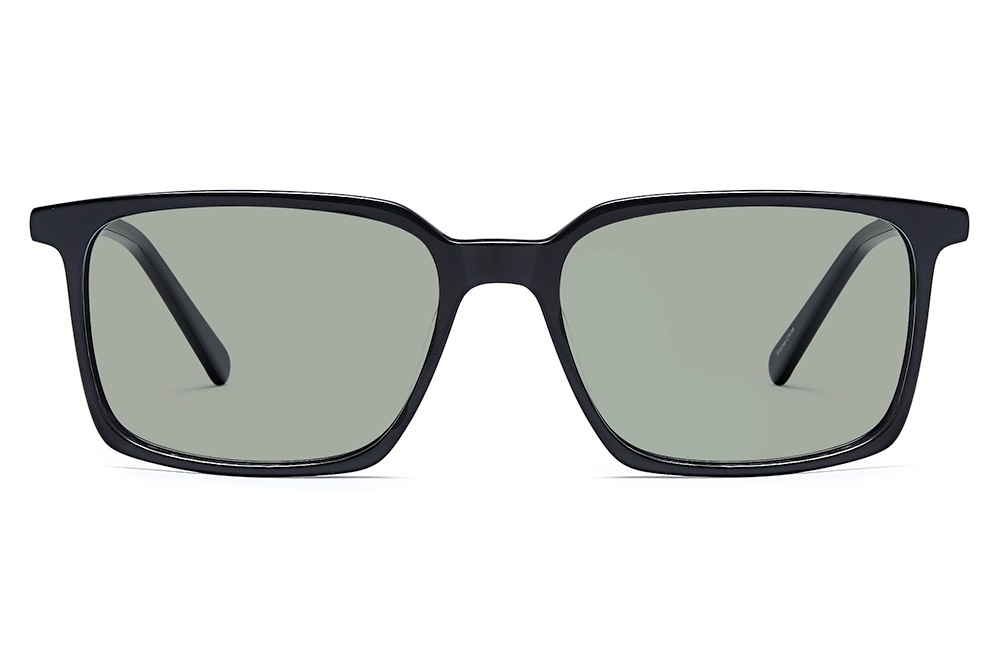Simple blue blockers don't block enough light.
Light Can Hurt
If you're living with migraine light sensitivity, and light causes you pain and discomfort, you might be surprised to learn that blue light glasses aren't proven to help.
While generic blue blockers may block some blue light, they often fall short in targeting the specific wavelengths known to trigger migraine attacks and pain.
Avulux Migraine & Light Sensitivity lenses were designed specifically for people living with migraine light sensitivity and they block up to 97% of the most harmful blue, amber, and red light while allowing soothing green light through.
See What Our Customers Have to Say
Stephanie B.

Serena C.

Aurelia L.

Ann P.

Alex

Amy D.

Sara

About Blue Light Blockers
“Blue light blockers” encompasses a range of products aiming to reduce the effects of blue light exposure from digital screens and artificial lighting. These blockers come in the form of glasses, screen filters, and coatings for electronic devices.
They primarily function to reduce the blue light reaching the eyes, and they claim to help with eye strain, fatigue, and disrupted sleep patterns. However, several studies¹ suggest this to be false.

The Science Behind Avulux
Traditional blue light blockers offer limited protection. Avulux lenses are an evolution in light protection.
Engineered to absorb blue, amber, and red wavelengths of light, while allowing soothing green light to pass, Avulux lenses provide a measured defense tailored for individuals living with migraine and light sensitivity.
Over 90% of Avulux wearers find daily comfort when incorporating Avulux into their daily routine, alongside other healthy lifestyle choices.
Avulux vs. Blue Light Blockers:
The Difference
Blue light blockers, despite their name, often fall short in effectively shielding your eyes from the harmful effects of blue light (let alone amber light). As illustrated in the above chart, these blockers typically do not block significant amounts of blue (480nm) or amber (590nm) light – both of which are known to exacerbate photosensitivity². To achieve optimal light management, it's essential to block both wavelengths effectively.
Fortunately, Avulux lenses are designed to address this issue head-on. Avulux lenses filter up to 90% of the most harmful blue light and up to 97% of amber light, preventing that light from reaching your eyes.
See why people choose Avulux Migraine Glasses over Blue Blockers:
| Features | Avulux Lenses | Generic FL-41 Lenses | Generic Blue Light Glasses or Sunglasses |
|---|---|---|---|
| Precision Tinted Lenses | Multi-Band | Single-Band | ✖ |
| Does Not Distort How You Perceive Color | ✔ | ✖ | Some Brands |
| Filters Up to 90% of Harmful Blue Light | ✔ | Some Brands | ✖ |
| Filters Up to 97% of Harmful Amber & Red light | ✔ | ✖ | ✖ |
| Allows in Over 70% of Soothing Green Light While Filtering Harmful Light | ✔ | ✖ | ✖ |
| Patented | ✔ | ✖ | ✖ |
| Clinically Proven and May Help People with Migraine by Precisely Filtering Light | ✔ | ✖ | ✖ |
| Premium Frames | ✔ | - | - |
| Effective Light Management Indoors or Outdoors With the Same Lenses | ✔ | ✖ | ✖ |
Avulux is the clear choice over generic blue blockers.
The World's Only Clinically Proven Lens for People with Migraine Light Sensitivity

Embrace Comfort with Avulux Migraine Glasses
Engineered to precisely filter harmful blue, amber, and red light wavelengths without negative side effects. Avulux helps you get back to doing the things you love, with greater comfort and peace of mind.
Shop online or consult your optometrist about Avulux for personalized guidance.
References
- Singh, S., Keller, P. R., Busija, L., McMillan, P., Makrai, E., Lawrenson, J. G., Hull, C. C., & Downie, L. E. (2023). Blue‐light filtering spectacle lenses for visual performance, sleep, and macular health in adults. Cochrane Library. https://www.cochranelibrary.com
- Hoggan, Ryan N, et al. “Thin-Film Optical Notch Filter Spectacle Coatings for the Treatment of Migraine and Photophobia.” Journal of Clinical Neuroscience : Official Journal of the Neurosurgical Society of Australasia, U.S. National Library of Medicine, June 2016, www.ncbi.nlm.nih.gov











